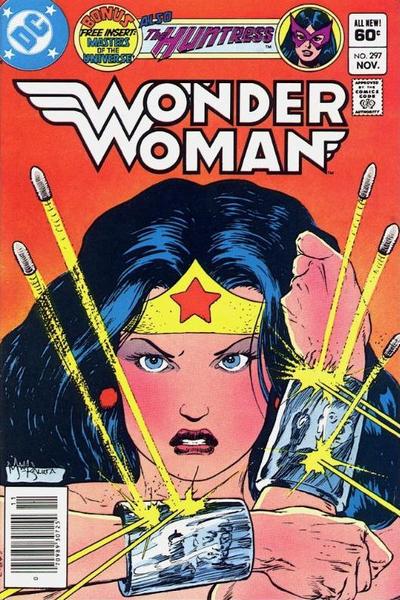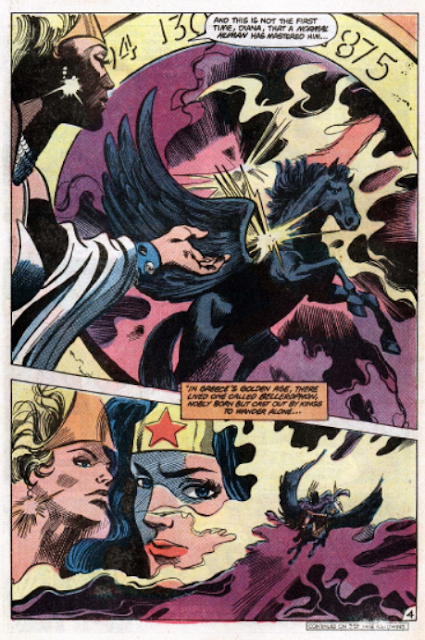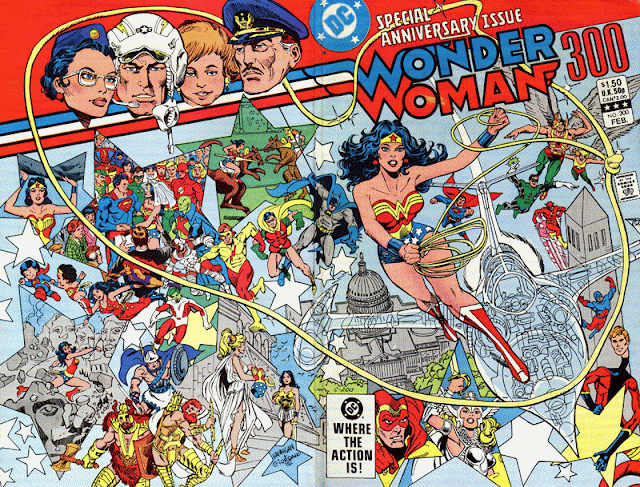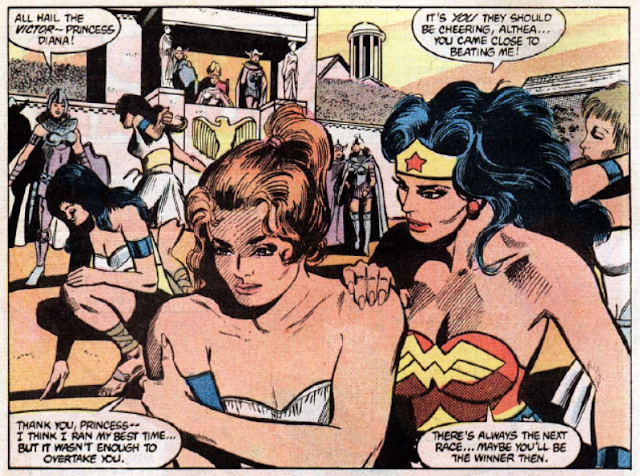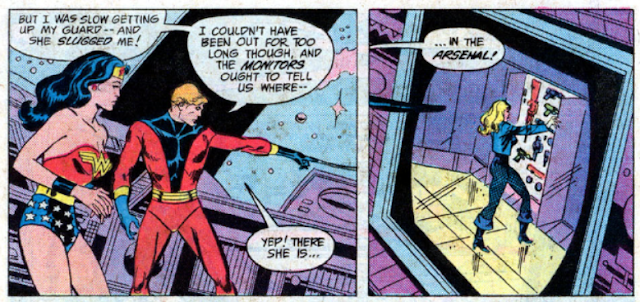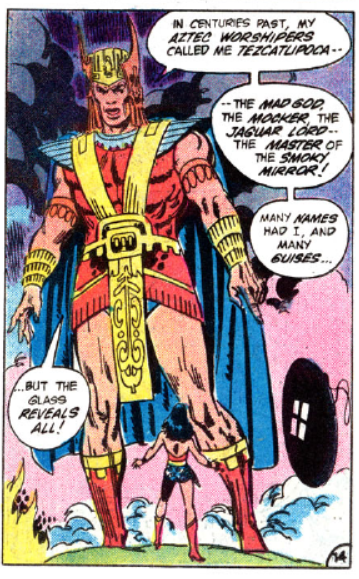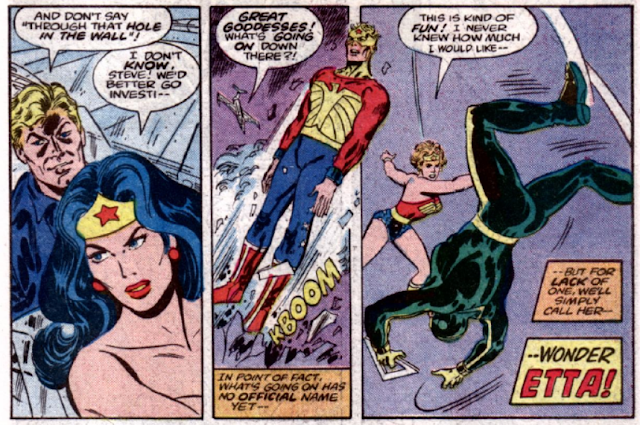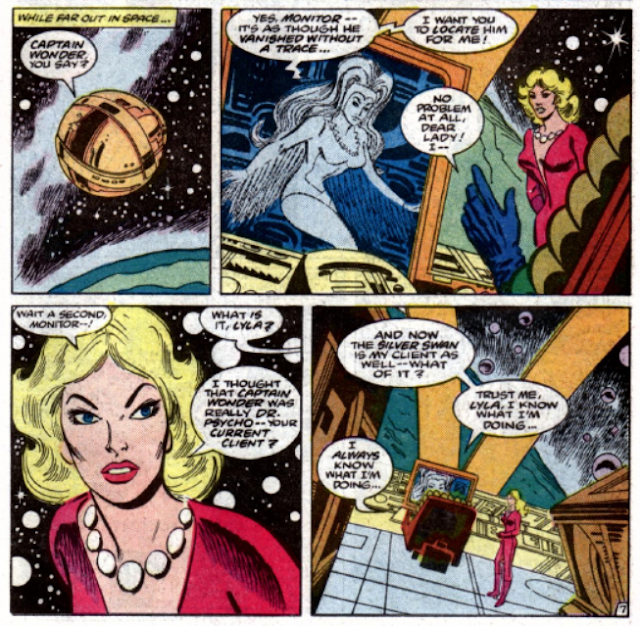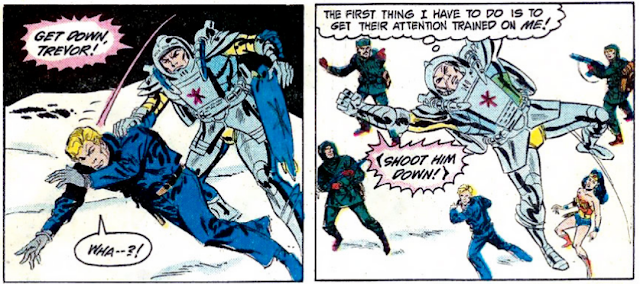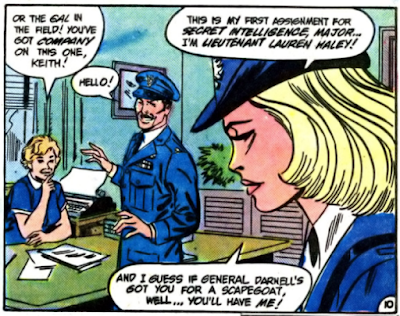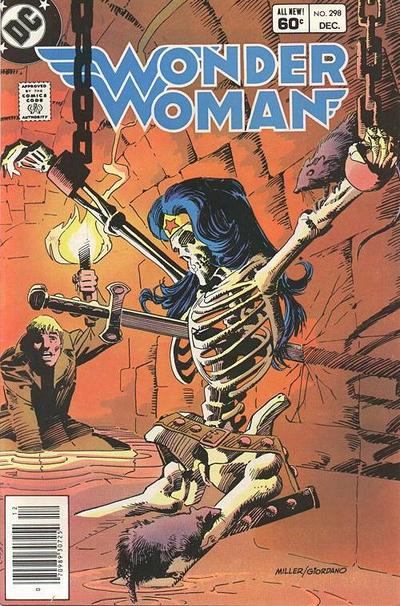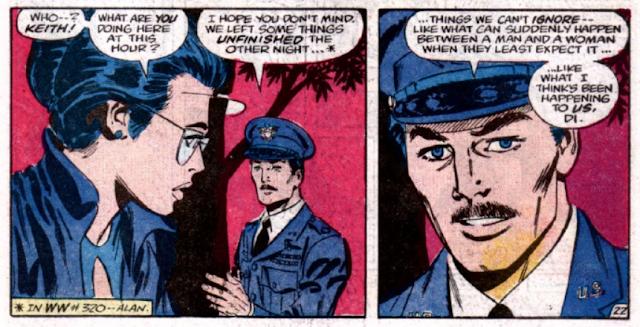Unfortunately, our on-the-scene journalist was unable to get access to the John Byrne Q&A panels. Fortunately, Eric Anthony of the Cave of Solitude podcast was able to come through and provide audio for this event. When asked if we can transcribe the audio, Eric replied with "I figure all the comic fans should have a chance to hear Mr Byrne chat it up with the fans." Truly appreciated, Eric. The crew at the Cave of Solitude podcast are fan's fans and are based out of Toronto, ON. They do a lot of interviews with comic pros and discuss some very interesting comic book stuff -- go ahead and give them a listen.
---
This is transcribed audio from two different John Byrne Q&A Panels held at the at the Metro Toronto Convention Centre on September 1st and September 2nd, 2018. It was an hour of Byrne opening up the floor to fan's questions. No question was refused.
True to our namesake, we only transcribed the questions and answers that had anything to do with DC comics and the eighties. We omitted questions and answers about Byrne's work on Marvel comics (ex: Alpha Flight, Fantastic Four, She-Hulk and X-Men) or Byrne's creative process -- unless it had something directly to do with DC comics.
(Please note: we have NO clue which attendees asked which questions. If we quoted one of your questions from the panel, feel free to take credit in the comments section of this article. Without further ado....)
 |
| Panel host Chis Ryall (on the left) and John Byrne (on the right). 2018. Photo source: Eric Anthony of Cave of Solitude podcast |
Q: "What were the circumstances in the 1990s that allowed for all the cross-overs between Marvel and DC? Do you think that it would happen again anytime soon? "
Byrne: "Well what happened was a lot of people were flowing back and forth, of course. Y'know... Marvel people were going to DC [comics], DC people were fleeing [Jim] Shooter and ending up at... y'know. I've often said -- and I'm going to go on a slight tangent here -- back in those days when you guys didn't know 3 months in advance what was coming, and the first time anybody found out about the Superman/Spider-Man book was when the house ads appeared in the comics, and I figure there was some kids who walked into the local drugstore and THERE IT WAS on the spinner rack... and they didn't know it was coming... and their heads must've exploded. THAT was, in many respects... the first Superman/Spider-Man... was the last gasp of old time comics. Because Ross Andru penciled it, except -- you may not know this -- it was given to Dick Giordano to ink, Dick took it up to the Continuity Offices where he worked with Neal [Adams], and Neal redrew all the Superman figures. Y'know? He erased Ross' and redrew it. He put it inside the profile that Ross had drawn it. But he redrew it. And then there was an editor who went in afterwards and put a white line around all the foreground figures to make them jump... all because people wanted it to be the best book that anybody had ever done. And today, well just what Neal did would make all the lawyers commit harakiri -- y'know... they'd just go out of their minds. And yet it produced this wonderful little moment of time."
 |
| cover of Superman vs the Amazing Spider-Man #1 (1976). Art by Ross Andru and Dick Giordano. |
"Then, of course, they had to kind of run it into the ground. The moment that the cross-overs became an ongoing monthly series... what was that called... 'Amalgam'? Whatever that was. This is what we do in the business: we take something special and just run the wheels off it. So they kind of went away for a while. Luckily, in that span, I got to do Darkseid vs Galactus. That was fun, because I was at a convention and George Perez was sitting next to me at our table, and this kid comes up and says "Why don't you do Darkseid versus Galactus?" and George and I just looked at each other and said "How come we don't think of stuff like that? Holy Crap" and of course I got to do one of my all-time all-time favorite jobs ever which was Batman/Captain America."
 |
| cover of Darkseid vs Galactus: The Hunger (1995). Art by John Byrne. |
"Even as I was doing those, the whole thing was dying, and then just some nasty stuff between Marvel and DC. Politics. It's always about politics -- one of the reasons I left both of them was that there was just too much 'stuff'."
 |
| cover of The Man of Steel #1 (1986). Art by John Byrne. |
Q: "How much creative freedom did you have when you reset Superman Man of Steel?"
Byrne: "When I was hired, or ASKED, to do Superman, they asked me to turn in a proposal. I turned in, I think it was, 20 points -- which I called 'my list of unreasonable demands'. Some of you may have seen the SYFY channel interview that I did, so you may have already heard this. Of all the things I wanted to do, the only thing that DC -- that Jenette Kahn -- pushed back on was... well, as I tell it, I was sitting there going 'Well, Kryptonite can kill Superman. How do we know that? That's kind of a test of destruction, isn't it? How do we know Kryptonite can kill Superman? ' So I came up with the idea that it wasn't Kal-El who was sent from Krypton -- it was the pregnant Lara. (This was before I did the big change and all that stuff.) She arrives on Earth, the Kents find her and take her home. She has the baby, and then she finds a lump of Kryptonite and it kills her. So now we know Kryptonite can kill Kryptonians. Jenette didn't like that. She thought that, of all the stuff I wanted to do, that was too extreme."
"And she [Jenette] said "What if the pressure is in the core that are going to cause the planet to explode are already creating Kryptonite? So people are dying of Kryptonite radiation on Krypton before it blows up?" and I said "I'll steal that! That's good! I'll take it!" So we did THAT instead, and that's how I got my "Out of the Green Dawn" title and all that stuff. That persuaded me to do the cold, anti-septic Krypton instead of the Flash Gordon/Buck Rogers Krypton."
 |
| panels from The Man of Steel #1 (1986). Art by John Byrne. |
Q: "To take you back to Superman with your 20 points there, you took him down several paces. Was that your idea?"
Byrne: "Oh yeah! I went into Superman saying "y'know, it's the 'Man' that's important. Not the 'Super'". Denny O'Neil once said to me, long before I got anywhere NEAR Superman, he once said "It's hard to write interesting stories about a character who is so POWERFUL that he can destroy entire alien races by listening hard." And I said "yeah!" Y'know? The Superman movie, with Christopher Reeve, the first one, which I saw 127 times in the theater. That is not an exaggeration, that is the number of times I saw it. It struck me that every time I saw it, he's doing all this super stuff -- y'know? Pushing over mountains, and whatnot -- but the moment the audience cheered, every SINGLE time, was when he tore the car door off to get to Lois. And I said "That's relatable!" Who among us hasn't had THAT moment? That's something we can all comprehend. I said "That's why he needs to be Superman, but not Superman Who Can Push the Earth Around". As a kid, I used to have problems with that image too, because I always think 'well, they draw it sideways', but he's standing on his hands, isn't he, to push the earth? Why doesn't he just bore into the earth? Y'know?"
"So I said "Let's bring down and let's make him comprehensible" and I also tried to introduce some science, so that his x-ray vision, for example, was NOT him firing x-rays out of his eyes. I said "That's not how x-rays work! If he was doing that, he'd have to fly around to the other side to intercept it." I said "He can see the WHOLE spectrum. He can SEE x-rays. Y'know? That's how he can see through stuff. He can probably see radio waves." I thought about getting rid of heat vision, because that wasn't a natural extension of what people can do -- but I found it useful."
 |
| panels from The Man of Steel #4 (1986). Art by John Byrne. |
[Another fan asked a similar question on Sunday. Byrne elaborated on his answer a little more...]
Byrne: "When I went off-contract at Marvel, Dick Giordano called me immediately. He said "Okay, you've been bitching about Superman for years... put your money where your mouth is." Let me add parenthetically that I wish I had said "no", but I said "yes" and got together with Dick and Jenette [Kahn] and Paul Levitz and talked about stuff, and I came up with, what I called, my 'list of unreasonable demands'. It was about 20 points, and they accepted most of them. They said "yeah, you can do this." "
"Superman is, once again, the sole survivor of the doomed planet Krypton. That's kind of important, I think. I wanted to make Ma and Pa Kent younger, so it was more reasonable that he was THEIR kid and didn't have to pretend that they got him from their cousin in Milwaukee or something. I wanted to emphasis that it is the MAN that is important, not the SUPER. I also wanted to make Clark Kent more dynamic. My favorite Clark Kent is George Reeves. I've often said that when you watch that and show Lois will come in and go "Oh Clark! Oh, something horrible is happening!" and he'll go "Oh, get off my case, Lois. I'm working!" And then she leaves and he just goes. He was such a dynamic... He was a very dynamic Clark. He wasn't a wimpy Clark."
 |
| George Reeves as Clark Kent (circa early 1950s) Photo source: unknown |
"Although I've said many times: Christopher Reeve convinced me that that disguise works. That you can part your hair on the other side, slouch, wear a pair of glasses, and look like a different guy. I'm sure you all remember the scene where he comes to Lois' apartment (after Superman has flown her around and Clark comes to take her out on a date) and he's standing there -- and she's gone into the bedroom to change, and he looks at the bedroom door and he takes off the glasses and stands up like another 6 inches, and then she comes out and he puts the glasses back on. But, he really convinced me that you could do it if you sold it properly. You could do it. So that was a lot of what I brought to it."
 |
| Christopher Reeve as Clark Kent (circa late 70s/early 80s) photo source: unknown |
"I also wanted Lois to NOT be a bitch. Margot Kidder made me understand why Superman would be smitten with Lois, because up until then I was like "Why?". I remember the Superman parody I did in What The?... it was Park Bench and Nosy Dame were their names. I also wanted Lana Lang to be a more important character. I felt she got a short shift. When Superboy was created, the character/the comic, the Superman editorial office ignored it for, like, 10 years. They just pretended the Superboy comic didn't exist. This whole thing was going on with Lana, and if you were reading that independently you'd go "Oh obviously he's going to grow up and marry Lana, right?", but for years in Superman [it was] "Oh obviously he's going to marry Lois, right?". So the first time they brought Lana into a Superman story, she was this cold, hard sort-of baby Katharine Hepburn-like character. She's Lana Turner with red hair. So yeah, I wanted to get into the history and the background and build the characters from the ground up with a more realistic approach."
 |
| cover of Superboy #93 (1961). Art by Curt Swan and Stan Kaye. |
Q: Have you any Superman stories left? Or did you tell them all?
Byrne: "Oh, I could tell some more Superman stories probably, but I really feel it's a case of 'been there, done that'. Once you do Superman, you almost feel like your career is over once you've done Superman. "Well, nothing left here." So, yeah, I don't think I'd ever go back."
Q: "Back when you were doing Action Comics as a team-up book, is there anyone you didn't get to use that you wanted to use?"
Byrne: "Swamp Thing. They wouldn't let me. I went to the editor and said "I want to use Swamp Thing in Action Comics", and she said "No, no, we can't allow that to happen. Oh, by the way, we're using [Lex] Luthor." and I said "Well I don't want THAT to happen, because I haven't fully developed Luthor yet." She replied "Oh, it's already done." Oh, okay. That's how we're going to play THAT game, is it? Fine. So I didn't get to do Swamp Thing.
 |
| Spot Lex Luthor. panels from Swamp Thing #53 (1986). John Totleben art. |
Q: "Any comments on the Superman/Big Barda sex tape?"
Byrne: "Are you familiar with an old story called 'The Lady or The Tiger'? Okay, the whole point of that story was this guy had fallen in love with a princess -- it's set in India -- and the King/Raja doesn't approve, so he condemns the man to be put into an arena... and there are two doors: behind one door is a beautiful lady -- a princess he will marry if he opens THAT door. And behind the other door is a tiger, and if he opens THAT door, he's dead. So the princess he's in love with is sitting above this, and she points at one of the doors. And that's where the story ends. So we don't know -- what did he choose? What did she tell him to choose? Did she tell him the lady... or the tiger? And that's what I wanted to do with Big Barda. Superman and Big Barda. We don't know. Did they have sex? I don't know. Let the reader think about that."
 |
| panels from Action Comics #593 (1987). Illustrated by John Byrne. |
Q: "I have read somewhere that when you worked at DC you wanted to do something with Hawkman. but it never came about. I was wondering if that was true? And what your plans for Hawkman were?
Byrne: "Yeah. I've had a great love of Hawkman ever since the Joe Kubert days. I picked up the first Silver Age Hawkman [issue] from a magazine flat at the end of an aisle in a grocery store. The opening scene in the first Hawkman story with a little dog who turns into a bear scared the crap out of me. I was what? Nine, ten or eleven years old?"
 |
| panels from Brave and the Bold #34 (1961). Art by Joe Kubert. |
"I've always wanted to do Hawkman. Hawkman was sooooo messed up when I was there and since. And I came up with this whole thing to 'fix' Hawkman. We were rolling along on it, and then DC said "No, we're going to have THIS guy do it." and I said "Ok. Fine. I can do something else." I kept asking for [Etrigan] The Demon, and it took them, like, 15 years to give me the Demon."
 |
| Blood of the Demon #1 (2005). Cover by John Byrne and Alex Bleyaert |
Q: "Mentioning [Jim] Shooter, how much control did you try to preserve on your part?"
Byrne: "All of it. Shooter had/has, what I call, the 'Whim of Iron'. It almost seemed, literally, like he'd come in on Monday morning with a new idea, and we all had to follow it until he forgot it next the week because he had ANOTHER new idea. I mean, one of the main reasons why Roger Stern and I quit Captain America was because Shooter came in one day and said "Everything has to be one issue stories." and we said "Okay. We're just starting a three-parter, but as soon as we're done, we'll do one-issue stories.", and he said "No. Now.". And I said "Well, I've drawn six pages of this first issue, we can't fit the next three issues into what's left of the book." So he got huffy and pulled it. And that was in the days when the fans still supported me when I quit. "He must've done it for a good reason", they said [about me]."
 |
| These panels from LEGENDS #5 (1987) inserted for NO REASON whatsoever. Art by John Byrne. |
Q: "So for Fantastic Four, you came on five issues before the 20th anniversary, and then you left right before the 25th anniversary. What was the history there?"
Byrne: "Well, I was having fun working on the Fantastic Four. I was looking for a bit of a break. I'd been talking to John Romita Jr about drawing it while I wrote it. We were cruising towards that -- I think that would've been fun. And then I accepted the Superman gig, and in my innocence, I assumed that I would do Superman AND the Fantastic Four -- but as soon as Shooter found out about Superman, suddenly nothing I was doing on the Fantastic Four was any good... things kept getting changed and I had to do this and I had to do that. And I said to Mike Carlin, who was my editor then, "I'm gonna just leave. You shouldn't have to put up with the crap just because I'm going to do Superman." Mike Hobson, who was the publisher of Marvel in those days, he congratulated me on Superman and said "Anything that's good for DC will be good for Marvel -- it will be good for the whole industry." So I left, and then Shooter fired Carlin because it was 'his fault' I left. "
[Editor's note: After Carlin was 'fired' by Marvel, he became an editor at DC comics and oversaw the Superman titles (among other things). He remained an editor at DC from 1986 to 2011. Not bad, not bad at all.]
Q:"You've done extensive work with both companies (Marvel and DC), what did you find were the differences in which you approach those characters and the rules you have to abide by with them?"
Byrne: "I'll tell you a funny story. When I left DC, and I went back to Marvel, and I was doing West Coast Avengers. I had an issue that opened with a scene of Hawkeye out on the practice range firing his arrows. I drew him standing there, firing his arrows, and I said "oh! come one!" and I put him on this whirligig machine that's throwing him around and he's firing and he's still getting bullseyes. That seemed more Marvel. I mentioned that to Walt Simonson and Walt said "That's what you should've been doing at DC!" "Yeah", I said. "There was a different mindset the minute I stepped through the door at DC -- everything went down a few hundred notches." Stan [Lee] used to say "In Marvel comics, people don't reach for the phone,... they REACH for the phone!" It's true. You don't 'come in' through the door, you COME IN through the door. So yeah, that was the biggest difference, it was mainly psychological. DC is.... calmer. As I often said, seriously now... setting aside which characters are your favorite and all that, which universe would you want to live in? Because the DC universe has Superman, and the Marvel universe has Galactus. I think I'd want to live in the DC universe, because it's SO much safer."
 |
| panels from Avengers West Coast #42 (1989). Art by John Byrne. |
On his work with Jack Kirby's Fourth World series:
Byrne: "The first time I ever read New Gods (when it first came out), I had missed the first issue. So I started reading it at the second issue, and the second issue has that whole sequence "There came a time when the Old Gods died...", I read that and this double-page spread with armageddon and all that kinda crap, I read that and said "[expletive]! What was in the FIRST issue?!?". Which I ultimately tracked down, but that stuff just blew me away. That was one of those worlds that I just fell into and went 'wow'."
 |
| opening page from New Gods #2 (1971). Art by Jack Kirby and Vince Coletta. |
"And then, how many years later, DC said "Do you want to do New Gods? We're going to do Fourth World and put all those books together." [And I replied] "So I can do the New Gods, and the Forever People, and Mister Miracle all in one book? I'm there! Present!" So that was a lot of fun, and y'know, Fourth World was a lot of fun, Wonder Woman was a lot of fun. I could've done a hundred issues of either one of those, but the editor told me one day that he was going to be leaving DC, and I was very close to the end of my contract. I said "Oh god, I could re-sign for a year and end up with some nazi as my new editor. Do I want to do that? Do I want to risk being trapped for a year on these books the I LOVE, but with some editor that doesn't 'get them'?" So I left, I left both the books. And then the editor DIDN'T leave DC. Thanks a lot. It was one of those things that I always felt that I'd still be doing the New Gods today if that hadn't happened."
 |
| panel from Jack Kirby's Fourth World #3 (1997). Illustrated by John Byrne. |
It was revealed in Saturday's panel that Byrne's FAVORITE super villain costume design was Silver Banshee's.
Q: "Silver Banshee's costume... do you consider that to be actual flames?"
Byrne: "Yes. Silver flame. That was my attempt to do a Dave Cockrum costume. She's got the opera gloves and the thigh-high boots... which Dave did 500 times and every time he did it looked different. 'Oh! Storm has the SAME costume as Corsair!' "
 |
| Action Comics #595 (1987). Cover by John Byrne. |
Regarding changes to his characters by different creative teams:
Byrne: "I've had to train myself not to care, because when we let go, we have to let go. A somewhat recent example is what they had done to Cassie Sandsmark in Wonder Woman once I had left. I'd done this 'all elbows and knees' fourteen year old girl, and they turned her into Britney Spears. And that's because there's an awful lot of artists out there, sadly, male, who can ONLY draw Britney Spears. They can't understand, and there's an awful lot of fans who won't accept anything else. There were a lot of males saying how 'ugly' Cassie was, and I'd say "She's not ugly, she's ordinary. You guys are just used to seeing these cookie-cutter whatnots.""
 |
| Cassie as seen on the cover of 1996's Wonder Woman #105... |
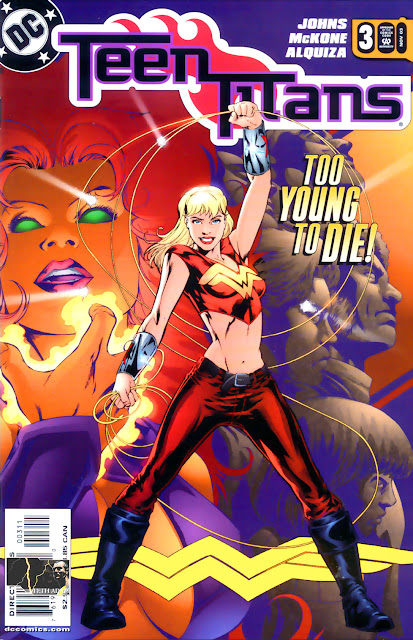 |
| ...Cassie as seen on the cover of Teen Titans #3 (2003) |
Q: "Was the LEGEND imprint within Dark Horse a response to the Image movement?"
Byrne: "In many ways. We looked at Image and said "That's a good idea.", and then we built LEGEND, and, as Jo Duffy so aptly put it, "It sure didn't take long for LEGEND to become MYTH." Yeah, that was unfortunate.What can I say? Jim Lee had actually asked me to join Image, and I had just signed with Dark Horse to do Next Men. He said "well, what does that matter? Come do it for us." and years later I thought "Y'know... if I had done that, I'd be a multi-multi-multi-millionaire, but I would have to have all the mirrors taken out of my house."
 |
| introducing LEGEND comics! gatefold cover from Wizard Magazine #31 (1994) |
Another fan asked about future plans on bringing back The Next Men:
Byrne: "No, that's finished. It's done. Stick a pin in it."
 |
| John Byrne's Next Men #1 (1992). Cover by John Byrne. |
On other 'greats of the industry' he respected:
Byrne: "I used to be really good buddies with Frank Miller -- I don't know what happened -- but while we were both doing our stuff (I was doing Fantastic Four and Alpha Flight, and he was doing Daredevil) we'd be talking to each other all the time, and being subversive in ways. Walt [Simonson] and I have always been good buddies."
A few other random factoids DC comics fans might be interested in:
-Byrne feels that his *best* technical comics work is 1991's OMAC: One Man Army Corps. I honestly cannot disagree with him on that one -- such a great mini-series.
-The comics work that he had the most fun with was 1997's Batman/Captain America. He'd like to go back and re-ink it.
-Laurie S. Sutton was once Frank Miller's girlfriend.
---
To hear John Byrne talk is much different that reading his words. Byrne will change his voice when he's quoting someone in a story, he uses a lot of inflection in his sentences, and he'll often stop a sentence in mid-stream and begin a new one. In short, we did the best we could to transcribe, but go ahead and listen to the ACTUAL audio if you get the chance.
If you'd like to hear the WHOLE audio broadcast of the Saturday Sept 1st 2018 John Byrne Q&A panel, you can listen to it here.
If you'd like to hear the WHOLE audio broadcast of the Sunday Sept 2nd 2018 John Byrne Q&A panel, you can listen to it here.
-Justin
Eric Anthony (and by extension, the Cave of Solitude podcast) has our eternal gratitude for sharing this with us. In addition, we want to give shout outs to Martin Slam Duncan and the Fastball Special podcast, as well as Aaron Broverman and the Speech Bubble podcast -- check 'em out for some great comic book coverage.

